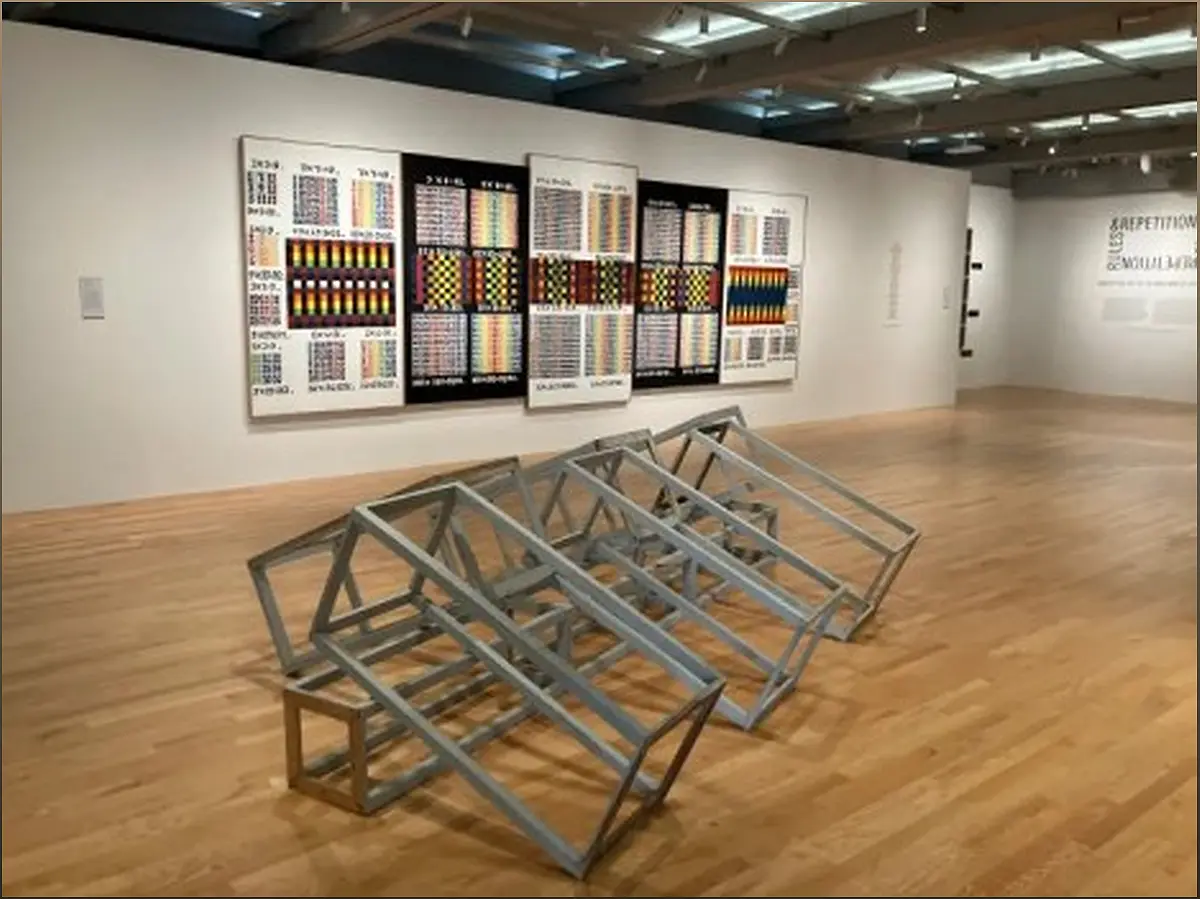Welcome to the captivating realm of conceptual art at the Wadsworth Atheneum. Prepare to be immersed in a world where ideas take center stage, as we delve into the transformative power of installation art. From thought-provoking exhibits to the rich history of the museum's collection, join me on a journey that celebrates the profound impact of conceptual art.
Exploring the Conceptual Art Collection
Embark on a journey through the Wadsworth Atheneum's conceptual art collection and discover the diverse range of artistic expressions.
Step into the world of conceptual art at the Wadsworth Atheneum and immerse yourself in a collection that pushes the boundaries of artistic expression. From thought-provoking installations to abstract masterpieces, the museum showcases a diverse range of conceptual artworks.
As you explore the collection, you'll encounter renowned artists who have made significant contributions to the conceptual art movement. From the Color Field abstract movement represented by Matt Mullican's cosmological expressions to Peggy Diggs' thought-provoking 'Objects of Abuse,' each artwork tells a unique story.
One standout artist in the exhibition is Lee Lozano, whose 'Wave' series takes center stage with its vibrant and captivating vertical works. These paintings not only complement each other but create a complete environment, inviting viewers to experience the power of repetition and order.
Unveiling the Transformative Power of Installation Art
Experience the profound impact of installation art and discover how it challenges traditional notions of artistic expression.
Installation art goes beyond traditional mediums and immerses viewers in a multisensory experience. At the Wadsworth Atheneum, you'll witness the transformative power of installation art firsthand.
One remarkable installation is Robert Rohm's 'Rope Piece,' which hangs loosely from the wall, blurring the boundaries between art and everyday objects. This unconventional approach challenges viewers to reconsider their perception of art.
Another standout installation is Vito Acconci's 'Learning Sessions (II),' a photo-based collage documenting his exploration of Tai Chi. This interactive artwork invites viewers to reflect on the process of learning and the connection between mind and body.
Diverse Perspectives in Conceptual Art
Discover how the Wadsworth Atheneum embraces diversity and inclusivity by showcasing conceptual art from artists of various backgrounds.
Conceptual art has often been dominated by white Western men, but the Wadsworth Atheneum aims to challenge this narrative by featuring artists from diverse backgrounds.
Through the inclusion of artists like Peggy Diggs and Lee Lozano, the exhibition celebrates the contributions of female artists to the conceptual art movement. Their works offer a fresh perspective and challenge traditional notions of art.
Furthermore, the museum showcases the photos of Bernd and Hilla Becher, who captured European industrial work sites in the 1950s and '60s. Their serial approach to photography adds a unique dimension to the exhibition, highlighting the diversity of artistic practices within the conceptual art realm.
The Historical Significance of Conceptual Art
Delve into the rich history of conceptual art and its impact on the art world.
Conceptual art has a rich history that dates back to the 20th century, with its prime often associated with the 1960s. Artists like Sol LeWitt, a Connecticut-born artist, played a pivotal role in shaping the movement.
While the exhibition at the Wadsworth Atheneum is not a history lesson, it acknowledges the historical significance of conceptual art. By featuring works from different time periods, the exhibition offers a glimpse into the evolution of the movement and its enduring impact on the art world.
By deliberately including artists who may not be considered part of the Conceptual canon, such as the Bechers, the exhibition challenges traditional narratives and broadens our understanding of conceptual art's historical context.
Conclusion
Conceptual art at the Wadsworth Atheneum offers a captivating journey into the world of ideas and artistic expression. Through thought-provoking installations, diverse perspectives, and a celebration of the transformative power of art, this exhibition pushes the boundaries of traditional notions of art. By embracing inclusivity and showcasing artists from diverse backgrounds, the museum highlights the richness and diversity of conceptual art. As you explore the collection, you'll be inspired to question, reflect, and engage with the profound impact of conceptual art.
FQA
What is conceptual art?
Conceptual art is an artistic movement that prioritizes ideas and concepts over traditional aesthetic considerations. It challenges the notion of art as a physical object and explores the power of ideas and intellectual engagement.
What is the significance of installation art?
Installation art creates immersive and multisensory experiences for viewers. It goes beyond traditional mediums and blurs the boundaries between art and the surrounding environment. It invites viewers to engage with the artwork on a deeper level and challenges their perception of what art can be.
Why is diversity important in conceptual art?
Diversity in conceptual art brings fresh perspectives and challenges the dominant narratives within the art world. By featuring artists from diverse backgrounds, the Wadsworth Atheneum celebrates inclusivity and expands our understanding of conceptual art's impact and relevance.
What is the historical context of conceptual art?
Conceptual art emerged in the 20th century and reached its prime in the 1960s. Artists like Sol LeWitt played a significant role in shaping the movement. The historical context of conceptual art provides insights into its evolution and enduring impact on the art world.

